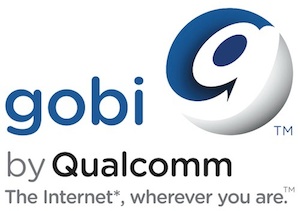Earlier today Qualcomm announced the newest version of its Gobi line of chipsets. Gobi chipsets were originally used mostly to embed a multi-carrier mobile broadband into laptops and was first widely utilized by HP starting in 2008 when the first version was released. It was more recently (and much more widely) used as the cell architecture for every iPhone since the Verizon iPhone 4.
What new features has Qualcomm brought to the table for their latest iteration? Most importantly: LTE support.
The fifth-gen Gobi chipsets will support a number of different LTE configurations, while retaining backwards compatibility with HSPA+ and EV-DO. This means that the newest additions to the Gobi family will be even more flexible then their predecessors, allowing for a device with a single cellular chipset to access “true 4G” and 3G networks all over the world.
It also adds integrated GPS capability, and is said to specifically “support leading platforms, such as Windows 8 and Android”.
This is extremely exciting for anyone who uses unlocked devices, or is “turned on” by the idea of being able to carrier hop with a single device and still get 4G data access. I mentioned the potential for such a chipset back in July in my editorial discussing my version of a US wireless market Utopia and how close (or far) we are from it. I’m really happy to see Qualcomm continue to develop the Gobi reference platform as I continue to think that hardware advances like this will move us in the right direction. Granted, there are still a lot of steps carriers can take to prevent carrier-agnostic devices from becoming the norm. Nevertheless, here’s to hoping that future Google Nexi, Apple iPhones, Motorola Droids and Samsung Galaxies will be able to float from carrier to carrier much easier than this sentence can float off your tongue right now.
Source: Qualcomm
Via: 9to5mac




